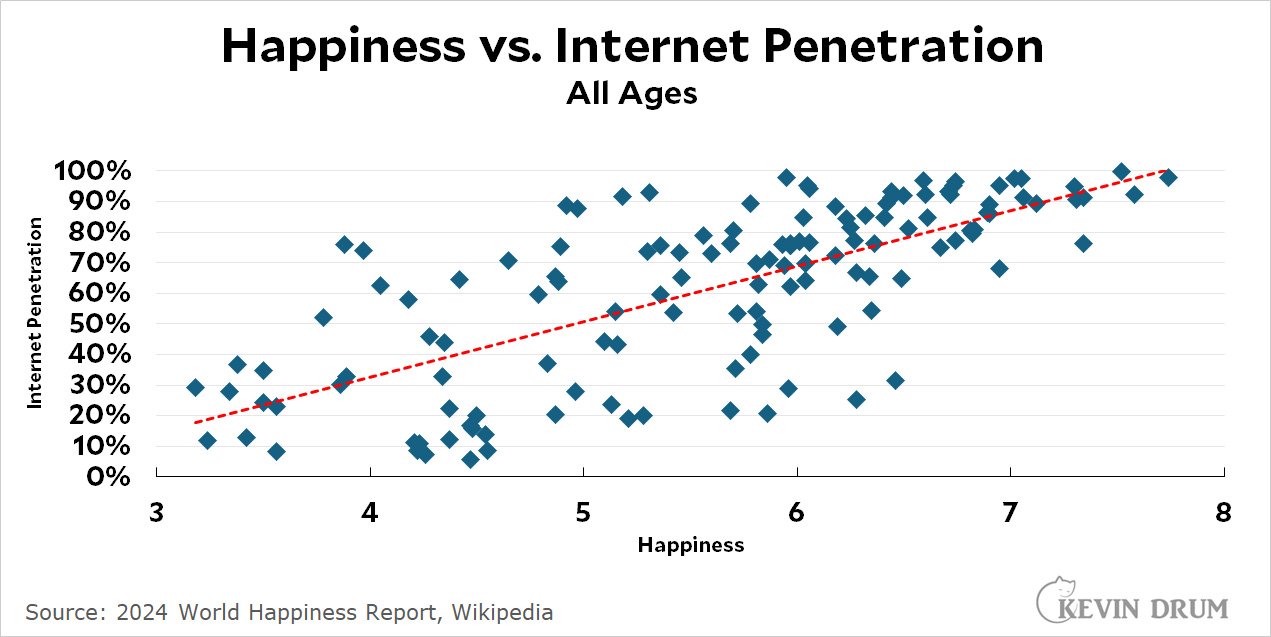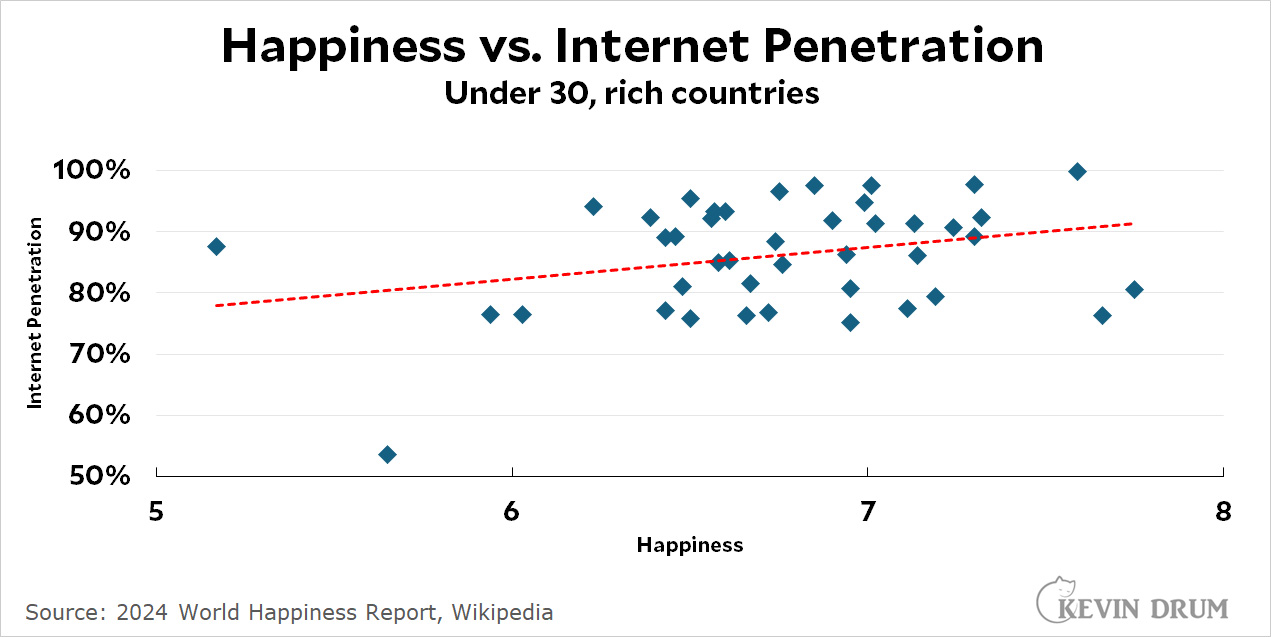The 2024 World Happiness Report was released yesterday, and it showed the youth of America becoming steadily unhappier.
Wait. No it didn't. Happiness among the young actually ticked up a bit in the latest report. But no matter:
Dr Vivek Murthy, the US surgeon general...described the report findings as a “red flag that young people are really struggling in the US and now increasingly around the world”. He said he was still waiting to see data that proved social media platforms were safe for children and adolescents, and called for international action to improve real-life social connections for young people.
Murthy added that the failure of governments to regulate social media better was “insane.” Since the report was sitting right in front of me, this got me curious. Does social media make people unhappy? I decided to take a crude look by comparing happiness to internet penetration in every country covered by the report. Here it is:
 Hmm. More internet = more happiness. But what about young people specifically?
Hmm. More internet = more happiness. But what about young people specifically?
 Same thing. But of course this doesn't tell us much. Rich countries have higher internet penetration, so all this says is that rich countries tend to be happier. So what if we restrict ourselves only to rich countries?
Same thing. But of course this doesn't tell us much. Rich countries have higher internet penetration, so all this says is that rich countries tend to be happier. So what if we restrict ourselves only to rich countries?
 The regression line isn't as steep, but it still shows the same thing: more internet = more happiness.
The regression line isn't as steep, but it still shows the same thing: more internet = more happiness.
Don't take any of this too seriously. Internet penetration is only a passable proxy for social media use, and I'm not sure how much I trust the happiness figures either. Nevertheless, to the extent the happiness report tells us anything, it doesn't tell us that internet use leads to unhappy kids. It might, but as usual there's not much real evidence to back it up.

The Internet is just a tiny add on to the main source of happiness!!! Marrying well.
Good lord, confounding variables.
Yes, it is not obvious to me how Kevin can even think about deducing anything from these graphs.
Yeah, no kidding.
Not to mention how difficult it is to measure happiness in the first place.
Yeah, I think the ability to draw conclusions one way or the other is pretty weak.
One thing we know about human happiness is that it often is the gap between expectations and outcome.
Another is using internet access as a proxy- it could also just be a proxy for affluence.
More internet penetration means more people can read you, therefore more happiness!
😉
My brother, when in the Marines, was told any penetration, however slight, constituted rape.
where do you put your internet?
This is a classic problem of not controlling for other variables.
Without seeing which countries are where on the scatterplot: isn't it likely that those countries with more internet penetration tend to have a higher standard of living? That's probably the thing more responsible for higher happiness, not internet penetration.
Similarly, within the "rich countries" (which doesn't seem to match the 38 OECD countries), there are probably other factors besides internet penetration that account for differences in happiness. It's notable that the correlation on the rich countries scatterplot is not very high, and without the one outlier at the bottom of the chart that line would be pretty damn flat.
The under 30, rich countries plot is obviously skewed by one low outlier at about 5.7. What country is that and how reliable is the measure? Without that there would be no significant slope. Of course that is still not consistent with the claim that internet is bad.
Greater internet penetration ≠ social media use
Pingback: Intertoobs: good or bad? - Angry Bear
For rich countries, if you remove one data point, you get a flat graph.
Not taking it too seriously, but somewhere in my old, slow, primates brain, I remember that the r² value would determine how well the regression line fits the data. In that last graph, the r² value doesn't look so good.
FYI: I would have no idea how to type an exponent without help from Google.
r-value (slope of the line) of under 0.4 is a weak association. An r-value under 0.2 is basically no association.
This is graph abuse. There is one data point near 50% internet penetration that also has low happiness. It is clearly an outlier. Remove that data point and see what the trendline looks like.
Also, as many other commentators have mentioned: confounding variables.